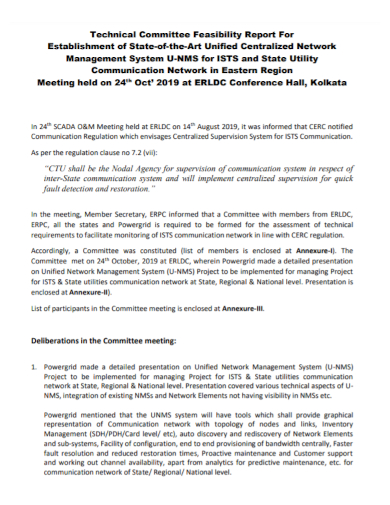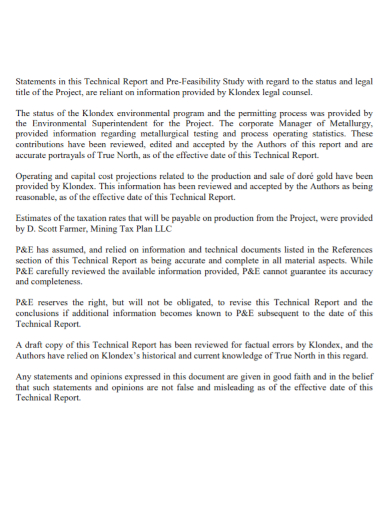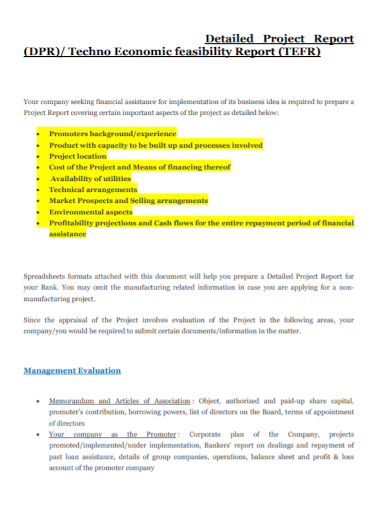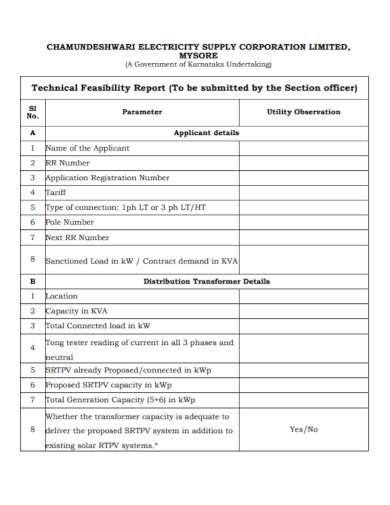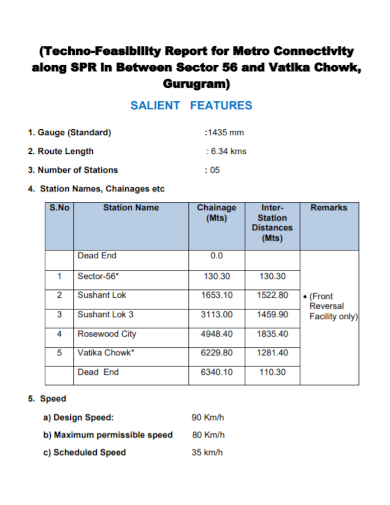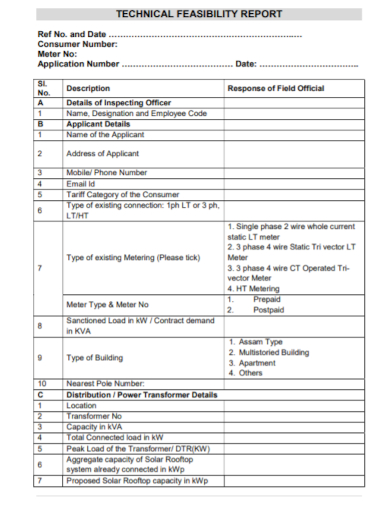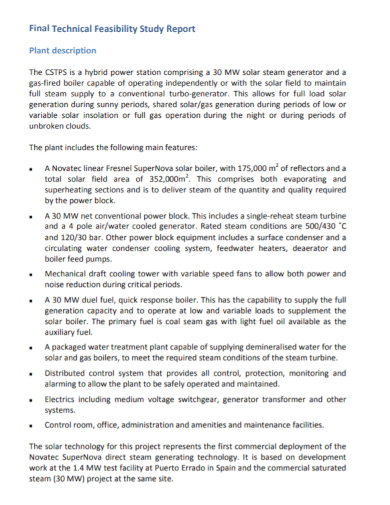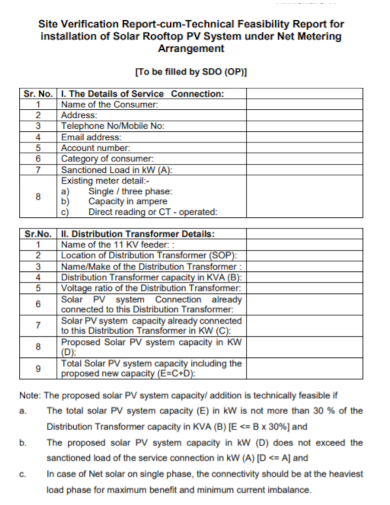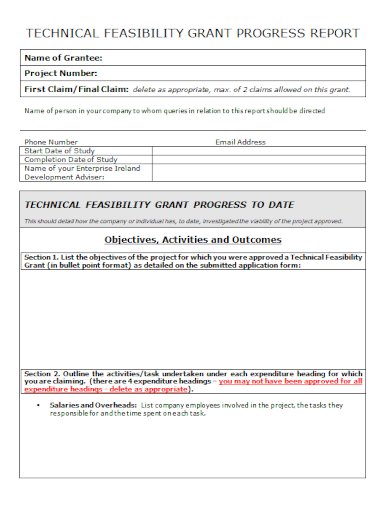Running a business is not as simple as selling something and receiving profit. Although that might be exactly what it is, there’s actually more to it than that. Running a business is quite broad. It involves a lot of technicalities making sure that you are providing service in the best way possible and making sure that everything sells. Especially for bigger businesses and companies. They have to have a proper roadmap to essentially know how their various products and services move through the market to physically reach their customers.
This is why most businesses, especially larger ones, conduct technical feasibility studies. It basically assesses the details of how a business intend to deliver a product or service to customers. Like a well laid-out plan for your business to follow on how it will produce, store, deliver, and track its products and services. To get a better idea of what this document is and what it looks like, check out these investment feasibility report samples listed below. You can also use these samples as a guide or as a template for when you’ll finally be writing your own.
10+ Technical Feasibility Report Samples
1. Technical Committee Feasibility Report
2. Technical Commercial Feasibility Report
3. Technical Pre-Feasibility Study Report
4. Techno-Economic Feasibility Project Report
5. Electricity Supply Technical Feasibility Report
6. Technical Feasibility Report Format
7. Techno-Feasibility Metro Report
8. Consumer Technical Feasibility Report
9. Final Technical Feasibility Study Report
10. Technical Verification Feasibility Report
11. Technical Feasibility Grant Progress Report
What Is a Technical Feasibility Report?
A technical feasibility study assesses all details regarding how you intend to deliver your products and services to your customers. It covers aspects such as materials, labor, transportation, location of your business, and the technology needed to fulfill everything. It’s like a roadmap that your products and services follow to physically reach your target market. The document would turn out to be tactical and logical plan. It is an excellent opportunity for long term planning and troubleshooting purposes in your management. Overall, a feasibility study such as this is developed by companies who want to understand how their own business works, and see if it is effective and efficient. To write any form of feasibility study is good business practice. It should ensure that your company can continue to grow, improve, and expand.
How to Write a Technical Feasibility Report
Writing a feasibility report can be quite a daunting task. It also has a lot of weight into it because it literally dictates how successful your business is. To effectively write your feasibility report, there are several steps you have to follow and keep in mind. These steps will be discussed in more detail below.
- Start with a summary
This will serve as an introduction for your feasibility report. To start, you have to highlight significant points of your report. This will act as a rough outline to follow as you prepare your report. Most of the time, it is a lot better to write it after you have finished the entirety of your report, as you have all the information you might want to include right in front of you. - Create an outline
The outline should serve just about the same purpose as the summary. Something to follow along, but not just the important parts. You have to include basic areas such as labor, transportation, location, and technology. With a clear description of each and the products and services that you will be offering. The order of presentation does not necessarily have to be in order, you just have to make sure that you have all the components in the right places. - List down materials
You should be able to specify what materials you might be needing during development. Mention all the parts and supplies required to manufacture the product. It should include every single spare part involved in producing or manufacturing your products. - Calculate labor costs
Every business out there require labor to produce products and services. Labor cost is one of the recurring outgoing cash flow of every company, which increases over time. When calculating labor costs you have to specify the number of staffs, types of staff present in running your business. Also make room for the employees that you might need in the future. - Logistics
Research transportation options in your area like local couriers, postal service, and shipping companies. Heavy items require trucks and freight companies. Perishable goods require overnight handling and express transportation. While travel by sea requires a lot of special permits. You should also examine those who offer logistic services for your company to understand their services better and other factors present. - Business location
You have to be wise in choosing your business location. That’s why it’s a part of your technical feasibility study. Smaller businesses can run from small brick and mortar shops in the community, while larger companies have proper operating spaces in industrial areas. Decide if your business can run from rented properties, storefronts, or you might need warehouses and factories. - Technological requirements
Figure out what technology your business needs. Basic requirements should be present like telephones, computers, cash registers, POS terminals, and a proper security system. Other more specialized technology might be needed, depending on the nature of your business. It can be quite an overwhelming process for startup businesses, so I suggest you seek help from experts in trying to determine what technology your business needs.
FAQs
What are the four types of feasibility?
Technical, Economic, Legal, Operational, and Scheduling Feasibility.
What is the most important part of feasibility study?
The most important part of a feasibility study is the economics. Since it’s one of the main reasons why certain projects are started.
What is the difference between a feasibility study and a business plan?
Feasibility studies help determine whether an idea or a business is feasible. Feasibility studies are filled with calculations, analyses, and projections. While a business plan is mostly comprised of tactics and strategies to start a business.
Having a great idea for your business just isn’t enough. You have to know that you can make money from it and you have to know how you can make money from it. The technical feasibility study addresses these concerns, both physical and logistical mechanics of your business. To ensure that your products and services can reach where they are in demand. Making sure that you have a profit.
Related Posts
FREE 13+ Technical Writing Samples
FREE 11+ Sample Executive Report
FREE 10+ Budget Report Samples
FREE 9+ Daily Report Samples
FREE 9+ Trip Report Samples
FREE 9+ Sample Manufacturing Project Reports
FREE 9+ Recruitment Report Samples
FREE 9+ Physics Lab Report Samples
FREE 7+ Sample Project Proposal Reports
FREE 34+ Sample Report Writing Format
FREE 25+ Sample Project Reports
FREE 20+ Board Report Samples
FREE 12+ Requirement Analysis Templates
FREE 9+ Investment Research Report Samples
FREE 9+ Credit Reports

